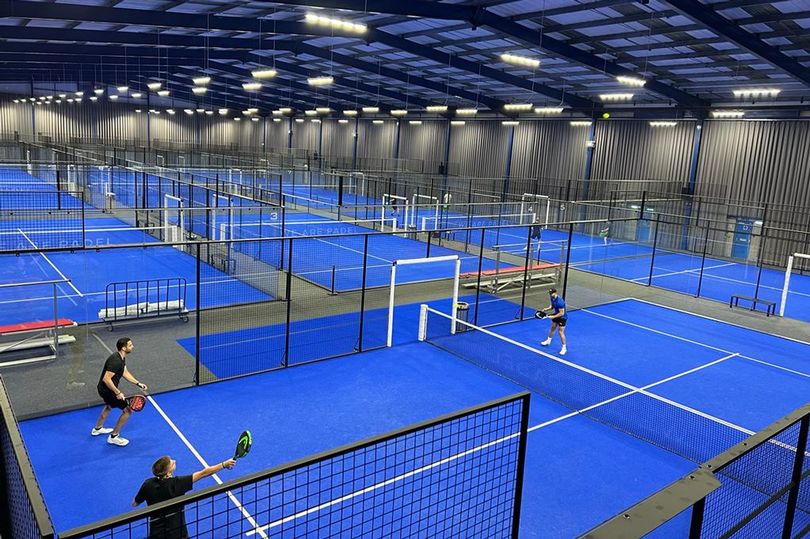The top 5 superstar tennis coaches and their winning philosophies
4월 17, 2019
The mental and physical challenges associated with tennis are manifold. At the tour level, coaches play a vital role in the sport and wear many hats which at any given time could include mentor, psychologist, tactician, confidant, friend and taskmaster. In 2019 we have already seen two major coaching changes: number one ranked Naomi Osaka had an acrimonious split with her coach Sascha Bajin and Dominic Thiem has parted ways with his long-term coach Günter Bresnik.
Given the importance these individuals play in a player’s entourage, we wanted to highlight five of the most successful individuals in the current era.
Our research has unearthed their own pedigrees as players (or lack thereof), their illustrious coaching resumes, guiding principles applied in their role, controversial moments (Patrick Mouratoglou has more than the rest of the group combined!) and where you can get lessons from other coaches applying their methods...
PATRICK MOURATOGLOU: SERENA’S GURU

Patrick Moruratoglo, 48, is of both Greek and French descent. He founded the Mouratoglou Tennis Academy in the vicinity of Nice, France in 1996. Patrick had aspirations of becoming a top tennis professional and foraged an impressive junior career. However, his father, Founder of the renewable energy company EDF Energies Nouvelles (and one of the richest individuals in France) insisted that he focus on academics instead of an athletic career. According to Mouratoglou, "This created a great frustration for [him] and became a motivation to become a professional tennis coach”.
While he pursued a degree in business, he taught tennis on the side and eventually set up the Bob Brett Academy (named after a legendary Australian tennis coach) at the age of 26. Several years later he went at it alone and established his namesake academy which enjoys a steady flow of professionals at its South of France locale.
Coaching CV
Patrick has a laundry list of male and female professionals with whom he has worked over the years up until 2012: Marcos Baghdatis, Julia Vakulenko, Anastasia Pavlyuchenkova, Aravane Rezaï, Jérémy Chardy, Laura Robson, Yanina Wickmayer and Grigor Dimitrov.
He started working solely with Serena Williams in 2012 and the duo have experienced an astonishing level of success. Mouratoglou has guided Williams to her fifth, sixth and seventh Wimbledon titles, the Olympic Gold Medal, her fourth, fifth, and sixth US Open titles, her second and third French Open titles, three consecutive year-end championships titles, her sixth and seventh Australian Open title and lifted her back to world No. 1 in the WTA rankings in 2015.
Patrick has also recently started sharing coaching duties for Stefanos Tsitsipas with Stefanos’s father and has been part of the team when the next-gen phenom broke into the top ten in 2019.
Keep motivation levels high ensuring players are constantly challenged
When Serena joined forces with Mouratoglou she was already one of the most successful female players of all time with a fully formed game. However, she was experiencing a plateau in her success and taking uncharacteristically early losses.
Patrick saw that it would be vital to “keep her motivated, help her develop new things or help her understand how to be more efficient with her existing game”.
Adapting to the idiosyncrasies of each player is more important than coming up with a blueprint for winning and continually re-applying it
Mouratoglou says that finding a way for him to adapt to the player is one of the most important conditions for success. According to him, each player has a different personality, different needs and there is always a different way to achieve the same goal - to win.
As a vital starting point, he takes time learning to understand the player, how to speak to them, how to analyze that player’s game and how to work with each of them taking into consideration their particular personality. He believes that every player has their own world and their own ‘language’, and this is something you need to learn as a coach in order to be heard, trusted and followed.
Even though Patrick has been coaching for 20+ years, he starts each engagement with the mentality of a freshman and essentially blank slate. He avoids falling into the trap he’s seen happen to some of his peers: having great results with one player and thinking that you have a recipe for success can be easily replicated. That’s just not the case with a sport like tennis.
Always focus on quality - not quantity
According to Mouratoglou, before focusing on reps and quantity, you have to be able to guarantee quality. Otherwise, “you repeat bad habits, and they become a part of you”.
Want a 60 second overview of his approach to coaching Serena? Check out this video.
Patrick is no shrinking flower when it comes to soliciting and securing press attention. Undeniably the most dramatic moment of his partnership with Serena was during ‘Serena-gate’ at the 2018 US Open when he was accused of and admitted to coaching during the match.
He has also recently called pro tennis today ‘flat’ and uninteresting, pointing out that more “vibrant” personalities like Nick Kyrgios are crucial to avoid the game’s popularity declining. He has said “Hawk-Eye is a mistake. No coaching is a mistake. Code of conduct is a mistake. Big mistake. Big mistake. Let people be themselves on a tennis court, then people have a chance to get to know them, like them, dislike them”, the point being that increasing the drama quotient is needed for fans to care about the game. Perhaps not surprisingly, Mouratoglou has also advocated for more publicity for coaches and suggested making them a regular addition to post-match interviews...
How to experience his coaching methods
Obviously you can’t just walk up and schedule a lesson with Mouratoglou at his academy but you can check out the impressive facilities and organise sessions with his staff. Check out the programmes offered here.
DARREN CAHILL: THE CHALLENGE SEEKER

Personal Profile
Darren Cahill, 53, is an Australian tennis coach and pundit. In his own playing career, he reached No. 22 in the world in singles and made the semifinals of the 1988 US Open. (You can see evidence of his playing prowess (and fitness!) in footage of a 2018 practice session with Simona Halep)).
Coaching CV
Darren has coached three different players who attained the number one ranking under his tutelage: Lleyton Hewitt, Andre Agassi and Simona Halep. His versatility as a coach and understanding of the game is put into relief by the disparate circumstances in each instance: he started working with Hewitt when he was only 12 years old, joined Andre’s camp in the twilight of his career when he was already a legend of the game, and helped extremely talented but mentally fragile Halep break through, winning a Slam and become number one during a four year tenure with her.
Guiding Principles
Cahill’s insights about differences between men and women’s tennis are particularly interesting given his incredibly rare coaching experience at the apex of both the WTA and ATP Tours.
The men’s game is black and white while the women’s game is colorful and more ‘complicated’
According to Cahill, although men and women play the same sport on a court with identical dimensions, the speed factor, the power factor, the strength factor result in different mentalities. The men’s game is somewhat black and white in the sense that they can rely on a particular shot to finish matches whereas women “can’t rely on one particular shot to a large degree to finish matches and so with that comes a lot of emotion and nervousness.” The upshot of these differences means that different approaches are needed for male and female players.
Data driven analysis is vital
Recognising the value of insights backed by data, early in his coaching career Cahill invested $10,000 buying a tool to collect the match data that is now publicly available. In match de-briefs and strategy sessions he will often pull out screen shots of data points showing items like court positioning and serve placement to reiterate his thinking and validate tactical changes.
The ideal scenario is to coach yourself out of a job
Cahill thinks that there is approximately a three- or four-year window of coaching a player where you should aspire to “empty the bucket” and give them as much information as you can. In his experience, because you are only working with one player at a time there is only so much you can really impart before there is diminishing returns to the partnership.
Controversial moments
Less controversial than shocking was the revelation that after working together for four years and achieving significant success, Cahill and Halep parted ways in November 2018 because of Darren’s desire to spend more time with his family.
Even if you don’t follow women’s tennis in depth, you probably heard about Cahill ‘firing’ Halep due to her terrible attitude at the Miami Open in 2017. Reflecting on the decision, he said that it was hard but it was needed and that he would have been doing her a disservice if he just patted her on the back and walked away and said, “No worries, we’ll pick things up next week.” That choice proved to be a positive catalyst for them and Simona had very strong results in the aftermath.
How to experience his coaching
Unfortunately there aren’t any opportunities to get coached by Cahill but you can still appreciate his exceptional insight into the game when he’s sitting in the commentary booth.
TONI NADAL: RAFA’S ROCK

Personal Profile
Toni Nadal (AKA ‘Uncle Tony’), 58, is a Spanish tennis coach and academy manager. Although he only started playing tennis at the age of 14, he was junior champion of Balearic Islands in his table tennis career.
Coaching CV
You’ve probably heard of his star pupil: his nephew Rafa Nadal. With Toni in his box Rafa won 16 Grand Slams, 30 Masters Series titles and two Olympic gold medals. Toni started working with Rafa at the age of three, so their partnership spanned an astounding 27 years.
Guiding Principles
Note: Much of Toni Nadal’s coaching strategies have to be inferred from Rafa’s disposition and performances because he has given very few (English) interviews on the topic.
First things first: insist on changing your player’s racket hand from right to left (just kidding).
Always stay humble
Rafa has experienced an incredible amount of success in his career and could be forgiven for letting it get to his head at times. However, Toni has ensured this doesn’t happen because he thinks it’s vital that Nadal stays hungry and motivated to continually improve. There was always more to do, more to refine and more to add.
Never get complacent about learning
“I’m interested, most of all, in the question of learning,” Toni Nadal has said. In a rare interview, he elaborated “for me the only thing that makes me stand out from some other coaches is that when I go into the locker room, as I did just now, I might tell Rafa he played very well, but my idea is always what can we do to make him better, even better. I’ve applied to everything in my own life. It’s a question of principle, really”.
Having a fighting spirit means never cave in and that suffering is inevitable
Toni believes champions must “endure and suffer - they must fight to the end to achieve greatness”. Rafa says his uncle taught him this: "Endure, put up with whatever comes your way, learn to overcome weakness and pain, push yourself to the breaking point, but never cave in. If you don't learn that lesson, you'll never succeed as an elite athlete."
Perhaps surprisingly, Toni advocates juniors focusing on training on fast surfaces and insists that they hone a large repertoire of shots, developing a complete game with multiple ways to hurt an opponent. He put it this way, "When I first got on tour, there were players with flaws - now everyone can do everything!"
Controversial moments
It was slim pickings attempting to find any fragility in the partnership between Toni and Rafa. However, Toni recently let slip that he thinks Rafa will retire in the next two to three years and that garnered quite a bit of unwanted press and resulting in a public apology from Toni for speaking out of turn.
How to experience his coaching
The main reason that Toni retired from coaching Rafa is because he wanted to stay put in Mallorca and oversee the growth of the Rafa Nadal Academy. The brand new facility offers a variety of camps and packages and a chance to catch a glimpse of the man himself out grinding away on the court.
MARIAN VAJDA: THE INDISPENSABLE ONE

Personal Profile
Marian is a 54 year old Slovakian tennis coach most famous for his partnership with Novak Djokovic. A successful player in his own right, he earned a career high ranking of 34 in singles won 2 titles before he retired.
Perhaps a surprising addition to this list, Marian gets less plaudits than he deserves for his coaching achievements. He worked with Nole from 2006 until 2017, then again from 2018 to the present day.
During this time Novak won 15 Grand Slams (seven Australian Opens, one French Open, four Wimbledons, three US Opens), five ATP World Tour Finals and 30 ATP World Tour Masters 1000s. He has also held both the Davis and Fed Cup Captaincy for Slovakia.
Fitness and diet is key
When Marian and Novak re-joined forces in 2018 one of the first thing Marin insisted on was improving Djokovic’s diminished stamina and muscle mass. This involved scheduling two sessions a day until he was satisfied with his foundational level of fitness.
Keep it light
If you follow Novak on social media you will see that there is an element of goofiness and levity to their relationship. This is clearly a manifestation of knowing what your player needs on an individual level and catering to that.
Take a stand when you see negative distractions
It is reported that one of the conditions of Marian coming back to work with Novak was the dismissal of long-time mentor Pepe Imaz from the team. Imaz seemingly played a ‘spiritual guide’ but it was Marian’s view that his influence compromised Novak’s mental strength and imperilled his ability to perform at the highest level.
Controversial moments
After many successful years working together, Novak famously ‘cleared house’ and opted for an entirely new direction with his team (which started with an ill-fated endeavor to be coach-free). However, that didn’t last and after brief stints of working with Boris Becker and then Andre Agassi and Radek Stepanek, Novak had to cajole Marian to work with him again.
How to experience his coaching
At this stage Marian is fully committed to Djokovic and doesn’t have an academy promulgating his coaching tactics like other members of this list.
IVAN LENDL: THE OPTIMISER

Personal Profile
Ivan Lendl is a 59 year old Czech American tennis coach. He had an illustrious tennis career as a player, racking up 8 Grand Slams (two Australian Opens and three US Open and French Opens) and 94 career titles. He spent 270 weeks at number one and had an 81% career winning percentage.
Coaching CV
Lendl has provided guidance for two very famous players: Andy Murray and Alexander Zverev. Ivan worked with Andy on two separate occasions and during which he won 16 total titles including three Slams (one US Open and two Wimbledon tiles), one ATP Tour Final title and two Olympic medals.
Lendl’s work with Zverev commenced in the summer of 2018 and the most significant result thus far has been clinching the ATP Tour Final title last November - the German’s biggest title in his career.
Focus. Pragmatism. Simplicity.
Andy Murray has a tremendously versatile game and struggled with shot selection before he joined forces with Lendl. One of the main things that Ivan addressed was this shortcoming with a bias on developing a more aggressive game.
There is no substitute for working hard
Lendl doesn’t believe in shortcuts. He showed an incredible work ethic during his career and expects the same from his players. When Ivan worked with Andy he would often arrange to have two hitting partners and run a series of draining two-on-one drills. Both Andy and Sasha have reputations for being hard workers and share a famously intense trainer. This level of dedication would no doubt have factored into Lendl’s desire to work with them.
Satisfaction leads to complacency
Lendl takes the view that if you’re satisfied with less, it’s hard to achieve more. He observes, “you can look at tournaments and sometimes there’s that qualifier or ‘lucky loser’ who gets to the final. And they usually never win the final because they’re already happy to be where they are. They’ve already over-achieved and so when things start to go badly for them in the match, they quickly start to fizzle out. You see it over and over.”
Controversial moments
Lendl’s successful partnership with Murray wasn’t without it’s rough moments. There is speculation that disagreements about money were part of the story. Moreover, Murray couldn’t have been too pleased when Lendl came out of retirement to start coaching a next-gen star when he was still competing on the tour…! Awkward.
How to experience his coaching
There is no prospect of getting lessons from Lendl I’m afraid. He already works a limited schedule with Zverev and when he’s not on the tour he’s either golfing or indulging this passion for training German Shepherds.
HONORABLE MENTION
PETER CARTER: THE GOAT’S INSPIRATION

If you’re not familiar with this coach it’s because there is a very sad reason. Carter was a contemporary of Darren Cahill (and a fellow Australian) and coached Roger Federer during his formative years. Federer credits Peter for honing his virtually flawless technique which has underpinned his unparalleled success as a pro. In a horrific turn of events, Peter died in a car accident during his honeymoon in 2002 and never saw Federer win his first of 20 Grand Slams at Wimbledon a year later.
Federer still gets choked up when he speaks about Carter’s untimely death, stating that "it was somewhat of a wake-up call for me when he passed away, and I really started to train hard afterward” because he didn’t want to waste the talent that Peter had discovered and nurtured in him starting at the age of nine.
***
Have we missed any coaches that belong on this list? Please add your thoughts to the comments below.
Also in Tennis Hacks

테니스 플레이어를 위한 최고의 선물
8월 08, 2025
테니스 중독 부모 / 친구 / 동요 / 파트너를위한 이상적인 테니스 선물을 찾고 있지만 영감을받지 못했습니까? 우리는 연구를 수행하고 다른 가격 대괄호에 대한 신선한 아이디어 목록을 제시했습니다. 옵션에는 이전에 들어 보지 못했지만 테니스 세계에서 파도를 치는 흥미로운 새로운 브랜드가 포함됩니다 ...

The 10 Best Gifts for Padel Players: Padel Bags, Covers & More
8월 05, 2025

The definitive guide to tennis bags for travel
8월 01, 2025
Flying with tennis racket can be a perplexing experience. Each airline has a different policy that may or may not give explicit instructions about your tennis gear. Fear not! We've done extensive research on this topic and provided an overview of the requirements of the major airlines. A little preview? Our Backpack and 24 Hour bag comply with carry on restrictions across the board...
Be the first to hear about new products, sales, give-aways and more...
© 2025 Epirus London.
Powered by Shopify


